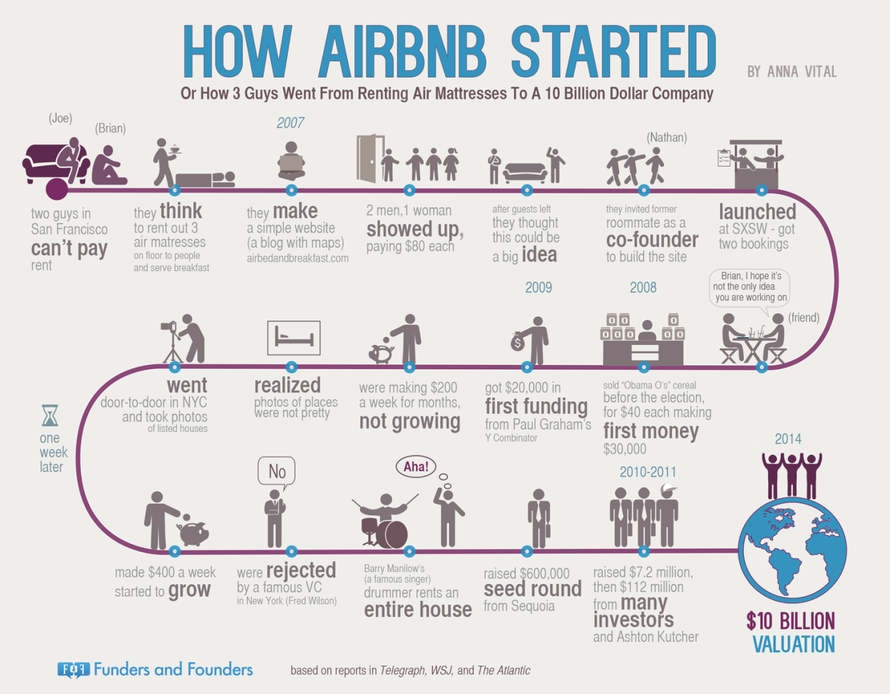The steps to take before building your startup
Startups are so hot. They have been for years now following the monumental success of unicorns like Facebook, Uber and AirBnB. The entrepreneurial spirit, or rather the entrepreneurial desire, has never been hotter, and with this comes lots of startup ideas.
Some startup ideas are great and would make for excellent online businesses while some are simply ideas that get you excited, but would make for terrible businesses.
If you’re excited about an idea or are planning on launching a startup, here are 10 steps that I recommend working through before a line of code is written.
1.Confirm what the actual product is
When an idea first pops in to your head it may sound great but is often not a complete solution. There are 3 tasks that I suggest doing to really cement the idea in your own head before you tell the world:
- Write a 30 second elevator pitch:
Can you explain the problem and the solution in 30 seconds? Often ideas are hard to explain. If you can’t get the concept across quickly then it probably isn’t a great idea. A test that I like to do is by going to Angel List. Startups listed there get to write one short sentence on what their business is. Can you do the same? eg: Buzzstarters sentence is “Content marketing in a box”, or Pinterest “A universal social catalog”. Can you explain your startup idea in one sentence? - 5 minute investor pitch:
You’re not really putting together a pitch, but this is a great time to think of what you would say in a pitch if you had the chance. The best way to structure your pitch is: Describe the problem; What is the size of Problem; What is your solution. There’s more to a startup pitch but when you’re at the idea phase knowing these 3 elements gives you focus and helps in determining if the idea has potential or not. If you want to see examples of pitch decks made but some very popular startups check out Pitch Deckia - Write a press release:
When Amazon come up with a new idea they write a press release as the first step after coming up with an idea. If the press release isn’t convincing then they either keep writing the release until they’ve nailed it or they scrap the idea. It’s a great way to help you decide if you have a product or not.
2. Decide what type of business it could be
Think hard about the phase of life you’re in and what you want out of the business. Are you going to quit your job to do this fulltime (assuming you’re already working)? Is it a lifestyle business that you are planning on building (ie: do you want it to pay you a decent salary but you aren’t planning on global domination). Are you after global domination? Are you after a quick exit? Or, is it just a hobby?
These are difficult questions to ask at this stage but it all ties back to your motivation and your expectations for your idea. Startups are all consuming so you need to ensure you are ready, and able, to take on the challenge.
3. Understand your target market
The most important thing with any business is to know who your customers are and what problem of theirs you are solving. You need to get into their headspace and understand what makes them tick. If you don’t know your customers well, then pay extra special attention to step 5.
4. Study your competitors
I often hear people say they have an idea that is completely new, 100% unique and there is no competition. After some quick desktop research I can often show them one, two or more other startups working on the same problem.
I’ve already mentioned AngelList in this post. If a Google search doesn’t reveal any competitors then try a search on AngelList or on sites like Techcrunch.com.
If you don’t have a direct competitor, that’s great. If you do find competition that’s ok too (most successful startups happen not just because of an idea that anyone could have come up with, but because of the drive and motivation of the founders). Study them, learn from them and try to find a gap in their offering that could become your advantage.
5. Speak to your customers
It is daunting ‘getting out of the building’ and speaking to people who you want as customers. However, it is the most powerful tool you have and apart from a time investment it is free.
It is a great research tool and will give you insights you might not have had before. Plus, you might start to get a feel for whether your idea is any good or not. Ideally you want people to commit to buying the product from you even though it hasn’t been developed.
6. Define your features
After going through the first 5 steps you’re probably already close to formulating a list of features.
If you are a non-technical founder, and are planning to outsource the development of your startup then this not only helps you but will help you get well considered and accurate quotes from web development companies.
7. Define your MVP
You have probably heard of the lean startup, minimum viable products or even pretotypes. Spend time getting your head around the concept.
Once you’ve done that, go through the list you created in step 6 again and cut out anything that isn’t completely necessary for your first iteration of the product. Remember, your goal is to get to market as quickly and as cost effectively as possible in order to find product-market fit. Do one thing well. The rest is fluff.
8. Think marketing & distribution
How are you planning to market your product? ‘Build it and they will come’ definitely doesn’t work. Can you expand your idea to include a viral loop, or is your idea linked to a clever distribution strategy where partners will essentially ship your product for you. Maybe you have a clever growth hack as part of your strategy?
Think hard about this.
You can always run Google Adwords or Facebook Ad smoke tests to test channels before you build your product. If you don’t have digital marketing experience, or your startup idea isn’t directly linked to a distribution model then ask your developers if they have experience in this.
Whatever you do, don’t launch without a strategy. It doesn’t have to be perfect to start with, but you must know how you will acquire your first customers.
9. Write down a budget
Be honest here. What money have you got and how much do you need to save for marketing and other ongoing costs.
Also try to put a figure on what your burn rate will be after launch. Burn rate is the speed that you will go through available cash. When you launch, your costs will probably be low but you will have expenses.
These expenses will be things like hosting, possibly rent, phone, internet connection, developer fees, etc. If you are bootstrapping, make sure you have enough runway, or a strategy to buy you more runway.
10. Prepare to get out of your comfort zone
Launching, and working on, a startup is hard work. You will end up doing things you’ve never had to do before. Be prepared to be product manager, project manager, strategist, marketer, salesperson, accountant, legal consult, office cleaner, receptionist etc.
Even Airbnb had to knock on doors to get started …

Focus, and get started
Completing this list doesn’t guarantee success. Unfortunately nothing does. However, completing some of the items in this list will give you focus. When you’re starting up laser focus is what you need.
Focus on the customer first, then the product. Stick to the plan. Learn fast. Fail fast. Iterate even faster. Almost all of the ‘big guys’ did this. Do it!
